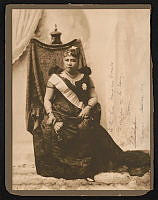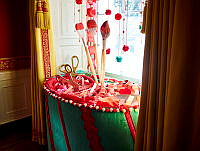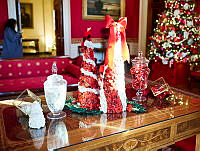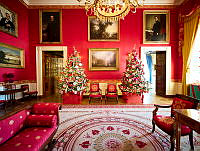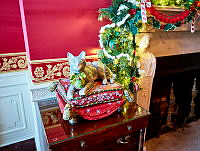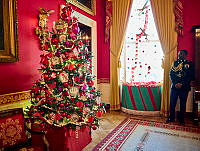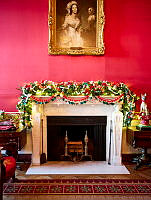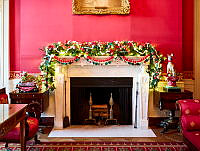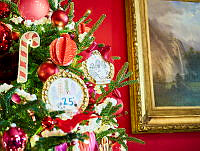
Treasures of the White House: Abraham Lincoln
Signed and dated lower left: G.P.A. Healy / 1869
939.1388.1
Lincoln's last public address was delivered on April 11, 1865, from a window above the north door of the White House, two days after the Confederate surrender at Appomattox Court House. His subject-was national reconciliation and the reconstruction of the South, and he concluded: "I am considering, and shall not fail to act, when satisfied that action will be proper." With his death just days later all action was ended, but in this portrait he is still considering, and he seems to attend to other voices.
Healy had begun work on a portrait of Abraham Lincoln for which the President had sat in August 1864. The assassination, however, turned the artist's thoughts in another direction, and he conceived The Peacemakers, the small version of which was completed late in 1868. In The Peacemakers Lincoln leans forward, listening attentively to General Sherman's urgings, as he habitually did to the advice of his counselors before offering his own pondered decisions. In the 1869 portrait Healy had the artistic inspiration of his career. He made the decision, no less pondered, to remove the president from all human assembly while preserving the listening, absorbed pose.
The portrait was painted in Paris and sent to Washington in response to an act of Congress (March 3, 1869) authorizing a Lincoln portrait for the White House. When President Grant chose another likeness by William Cogswell, Lincoln's son Robert Todd Lincoln purchased the Healy, later declaring that "1 have never seen a portrait of my father which is to be compared with it in any way."
Source: William Kloss, et. al., Art in the White House, New York: Abrams, 1992.
- Artist
- George P. A. Healy (1813-1894)
- Medium
- Oil on canvas, 73 3/4 x 55 5/8 inches (187.3 x 141.3 cm)
- Credit
- Bequest of Mrs. Robert Todd Lincoln, 1939













